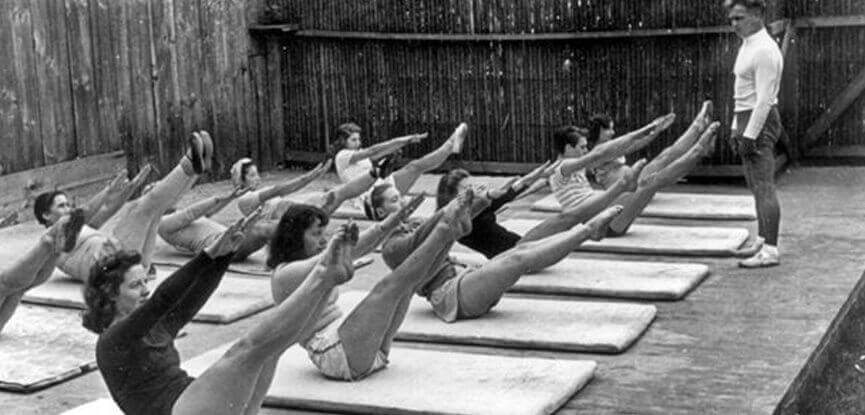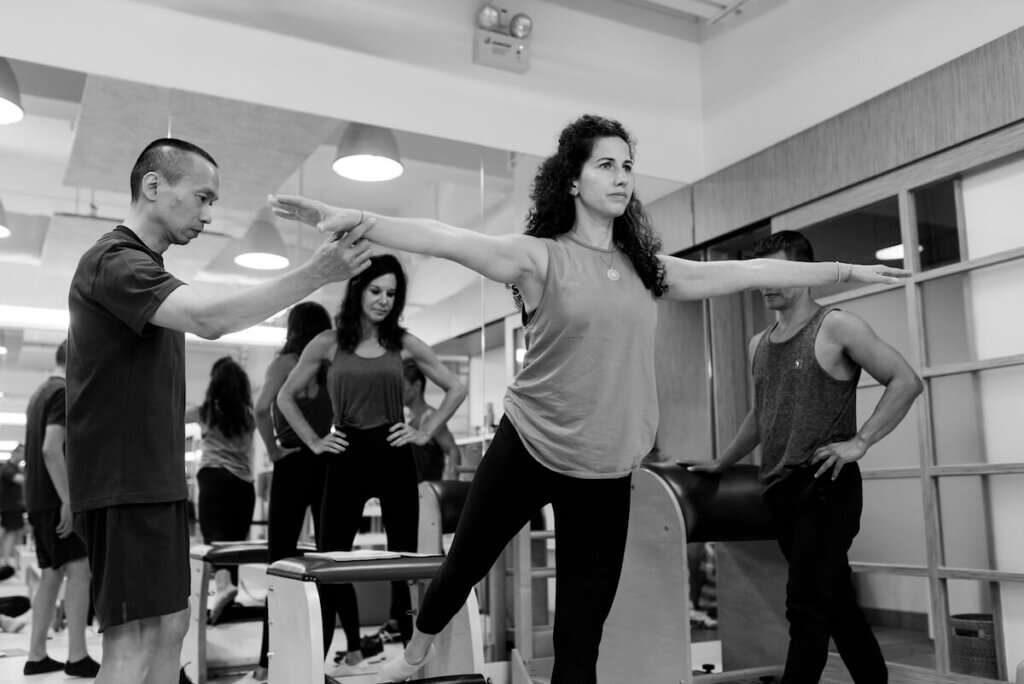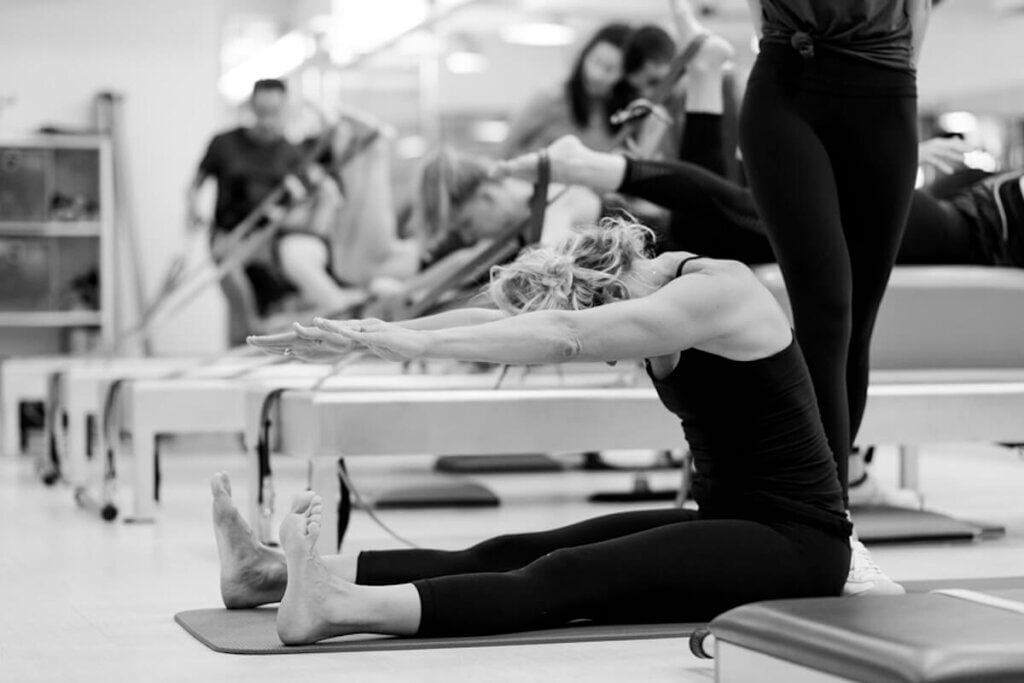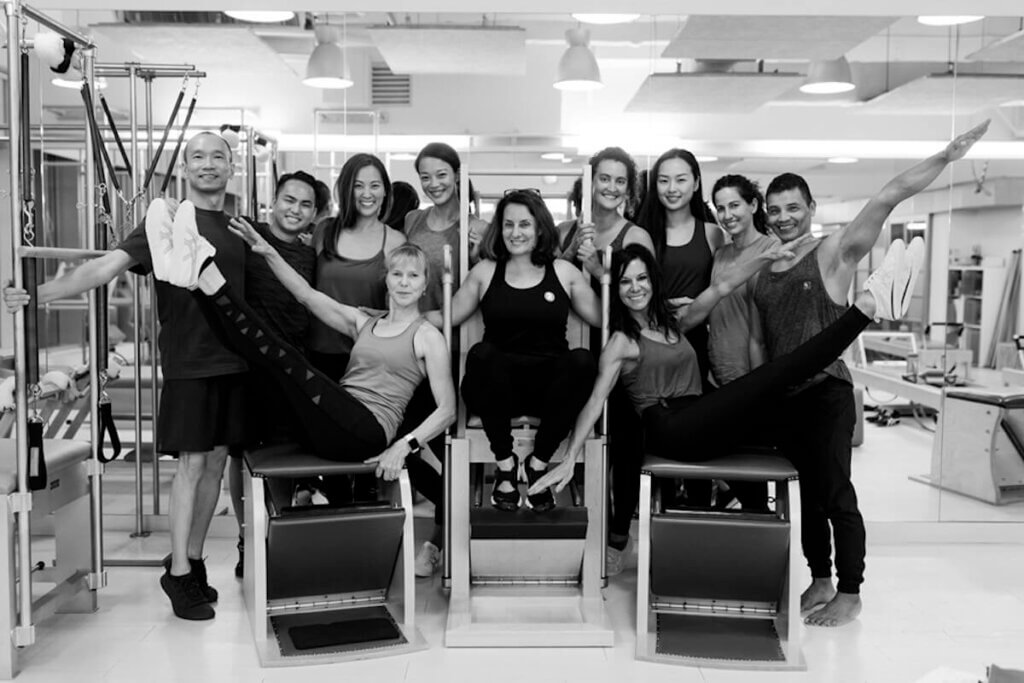
07 Mar Benefits of Classical Pilates.
Learn The System. Stay Younger For Longer

But perhaps what describes this amazing method best comes down to another one of his beliefs:
“A few well-designed movements, properly performed in a balanced sequence, are worth hours of sloppy calisthenics or forced contortion.”
Classical Pilates, as practiced at Flex Studio Singapore, is true to Pilates’ original vision, in that it is a system-based training program that clients learn, advance, then over time, master.
If you haven’t heard of Classical, you’re probably thinking all Pilates classes are the same. But in the many years since Joseph began his teaching, multiple versions have sprung up around the world.
At Flex Singapore, we have stuck to what we know works best to strengthen, lengthen, improve mobility, spine health and overall wellbeing. And that’s why we are the HOME of Classical Pilates.
So what is it? Quite simply, Classical refers to the traditional series of exercises designed by Joseph, performed in the precise sequence he intended, with the purpose of achieving complete coordination of body, mind and spirit.
Having suffered from numerous illnesses growing up, Pilates became passionate about health from an early age. He dedicated his later years to shaping and perfecting his method, focusing on holistic movement and overall wellness.
Deeply rooted in his work in rehabilitation, and drawing a little bit from his background in gymnastics and calisthenics, Pilates was able to create a full body movement system that enhances coordination, strengthens core muscle groups and even boosts immunity.
Since its inception during and after World War 1, the Pilates method has evolved immensely. Fusion classes have become all the rage. We’ve witnessed the birth of Xtend Barre, for instance, a dynamic programme that fuses Pilates with cardio and dance.
But through these modern innovations, Pilates’ traditional teachings remain intact and unwavering. Devoted practitioners and casual fitness-goers alike still swear by Classical Pilates all these decades after its inception.
Perhaps it’s because it is dynamic, controlled and fluid – three elements that complement each other to the point of total body conditioning. Perhaps it is the rigorous teacher training as well as the carefully crafted quality of the equipment.

But at its heart, we at Flex Singapore believe that the fundamentals to its long-lasting success are a combination of the following three major factors:
1. Sequence
If you’ve ever wondered why Pilates follows the same order of exercises every single time you do a class, well… that’s because Joseph Pilates designed it to be that way!
Each set of exercises was carefully crafted and measured to create continuous and flowing movement throughout your body to improve strength, flexibility and control. Each move builds from the one before—starting off with foundational exercises to warm up your body and progressing towards more complex (and often very tough!) movements. Pilates sequences also enhance mental alertness as performing the moves requires a great deal of focus.
Despite the repetitive nature of the sequences, you will always walk out of a Pilates class feeling challenged, even after your hundredth session, which goes to show how truly effective the method is.
Because of the fool proof nature of Joseph Pilates’ original system, many practitioners believe that doing any modifications to these sequences would only dilute the complexity and effectiveness of the method.
2. Apparatus
Even if you’ve been practicing Pilates for quite some time, chances are you haven’t tried every single apparatus yet. (If you have, then we’re impressed!)
One of the keys to the success of Classical Pilates is the depth and breadth of the method—much of which can be attributed to the diverse set of equipment available. In other words, you will never get bored doing Pilates!
Pilates himself invented much of the equipment that is still used in studios today, namely the Reformer, Cadillac, Wunda Chair, Ladder Barrel and Magic Circle.
Each apparatus was designed to intensify and deepen stretches, tone muscles and improve strength and control with varying degrees of resistance.
No equipment? No problem! One of the things that makes Pilates great is that it can be done on the mat, too. And yes, Mat Pilates is Classical Pilates!

3. Teacher Training
Aspiring instructors must undergo rigorous and comprehensive training and are required to complete a minimum of 600 hours to become certified.
What’s more, they must train under a teacher whose lineage can be traced back to Joseph Pilates himself.
What does this mean? Back when Joseph Pilates was running his studio in the US, a group of individuals—Romana Kryzanowska, Kathy Grant, Lolita San Miguel and Eve Gentry, to name just a few—worked and trained directly under him.
These individuals later became known as First Generation Pilates instructors. After Joseph Pilates died, they went on to teach his method to Second Generation Pilates instructors and so on.
The lineage system helps to preserve Pilates’ original teachings so that they can be passed down as accurately and canonically as possible to future students. It also guarantees that only the highest quality of training is provided to future apprentices.

Do you aspire to be a Pilates trainer?
Flex Studio and Real Pilates New York
Classical Pilates Teacher Training
Next Training Cycle in Singapore Starts March 2024!
Flex Studio is a host site for Alycea Ungaro’s REAL Pilates Teacher Training (RPTT), an
internationally recognized Classical Pilates training programme. Those who complete the training are certified 3rd Generation Classical Pilates instructors in the lineage of Romana Kryzanowska.
Singapore’s teacher trainings are conducted in Flex Singapore’s spacious studios, fully equipped with Gratz and Pilates Designs classical apparatus. Seminars are conducted in English, and are supported with weekly online learning via Canva. Modules are broken down by level: Beginner, Intermediate I and II, and Advanced.
Apprentices may register for individual modules. Full Classical certification will be awarded to those who complete 600 Primary hours (450 for Bridges) and pass the final written and practical examinations. Certificates of completion will be awarded for those who pass the practical exam and complete the required 150 hours at each level. Apprentices are required to take 5 Privates and 6 Semi Privates for Beginner, Intermediate I and Intermediate II modules. To complete the Advanced module and qualify for certification, there is a requirement of 22 additional mandatory hours, which can be split across a minimum of 5 Privates and Semis.
Each module will cover all Apparatus (full studio). Thus, completion of the Beginner course will give Apprentices the skills to teach a full 60 mins Classical Private session and group class, using all the equipment in the studio. Upon successful completion of Intermediate I, Apprentices are given the paid opportunity to teach at Flex Studio.
3RD CYCLE SINGAPORE 2024 TRAINING DATES
Beginner- 21-24 March
Intermediate I- 25-28
April
Intermediate II- 13-16 June
Advanced- 1-4 August
Please inquire here for course details and fees.
Places are limited! Secure your spot by Applying Now.

